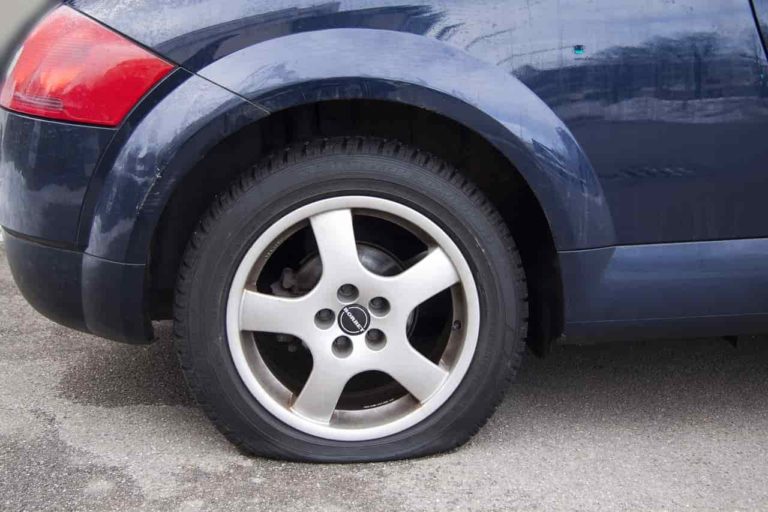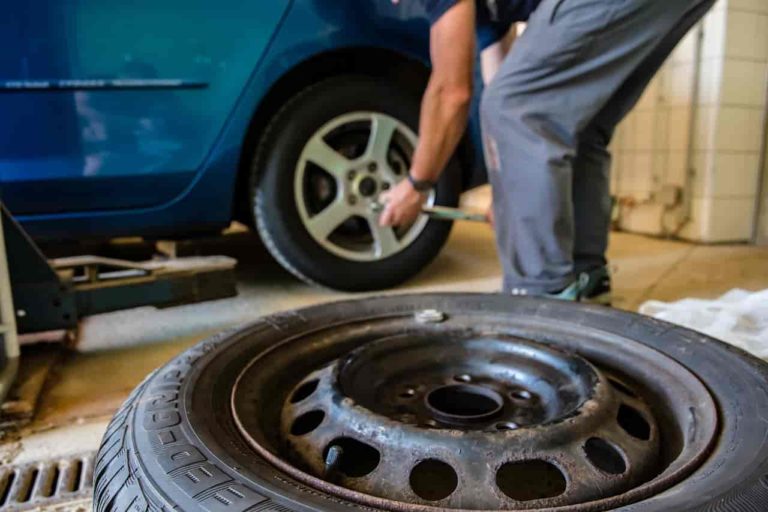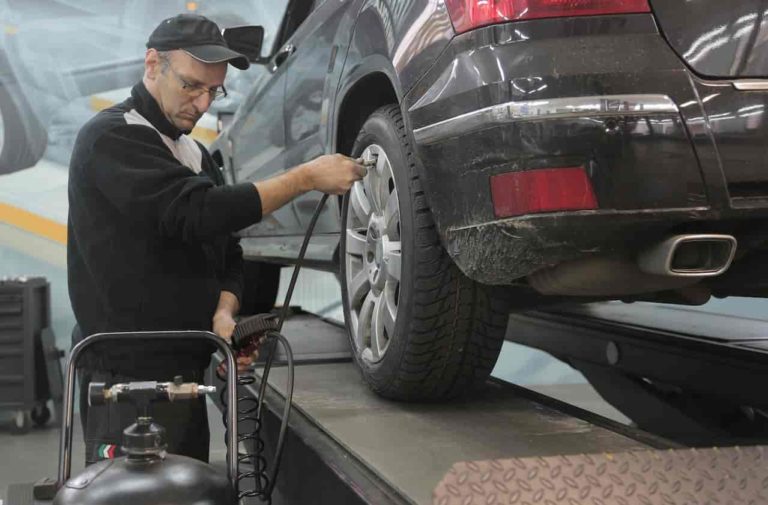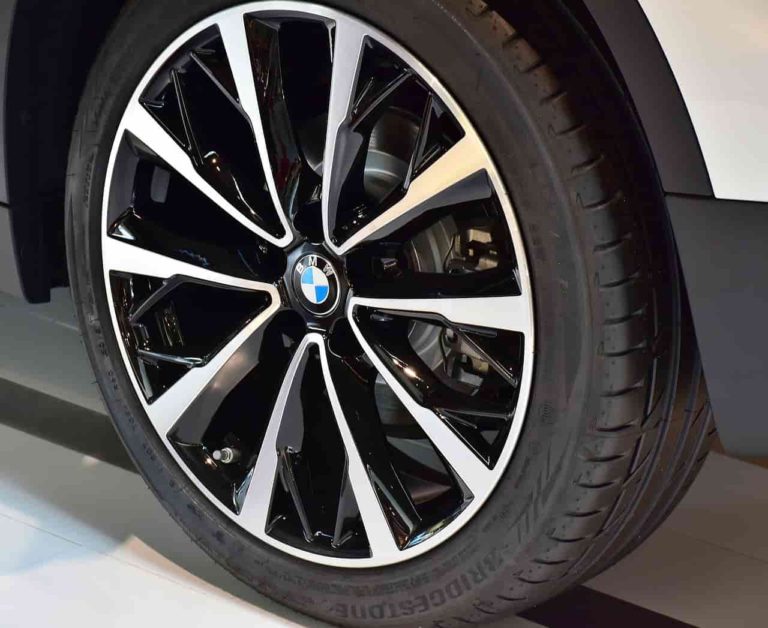Introduction
Tires are the only point of contact between a vehicle and the road. Therefore, it is crucial to maintain them properly to ensure maximum safety, longevity, and performance.
One of the most common issues with tires is underinflation. According to the National Highway Traffic Safety Administration (NHTSA), around 33% of all passenger cars and 25% of light trucks on US roads have one or more underinflated tires.
What are Underinflated Tires?
Underinflation occurs when a tire has less air pressure than recommended by the vehicle manufacturer. It can be caused by various factors such as temperature changes, slow leaks, punctures, or simply neglecting regular maintenance checks. The recommended tire pressure for vehicles can usually be found in the owner’s manual or on a label inside the driver’s door jamb.
Driving with underinflated tires can lead to serious consequences such as accidents, increased fuel consumption, reduced tire lifespan, and environmental impact. Therefore it is essential to maintain proper tire pressure levels.
The Importance of Maintaining Proper Tire Pressure
Proper tire inflation ensures optimal handling, braking performance and ride comfort while reducing irregular wear and tear on your tires. Underinflated tires amplify road vibrations which make your ride uncomfortable and also cause your steering wheel to vibrate excessively at speed.
In addition to providing optimal performance while driving a vehicle, maintaining proper tire pressure can also save you money in fuel costs in addition to reducing emissions from vehicles into our environment. Every mile per hour above 50 mph that you drive with under-inflated tires reduces fuel efficiency by 0.1%.
Purpose of the Paper
The purpose of this paper is to discuss the effects and impacts of underinflated tires on vehicle performance, safety, and the environment. Additionally, this paper will provide useful information on how to check tire pressure, when to check it and other essential maintenance tips for your vehicle’s tires. By the end of this article you should have a great understanding of why it is critical to keep your tires properly inflated.
The Effects of Underinflated Tires
Reduced Fuel Efficiency: The Silent Money Drain
One of the most significant effects of underinflated tires is a decrease in fuel efficiency. When tire pressure is lower than recommended, the vehicle’s engine has to work harder to maintain speed, which results in more fuel consumption. According to the U.S Department of Energy, underinflated tires can decrease fuel efficiency by up to 0.6 miles per gallon (MPG).
If we consider that an average American driver travels 13,500 miles per year with a vehicle that gets 25 MPG, and loses one MPG due to underinflated tires, this would result in over $100 in additional fuel costs annually. The amount of money that can be saved by a city, state or country’s total driving population is enormous. Furthermore, consistently driving with underinflated tires can cause additional engine wear and tear and reduce your vehicle’s lifespan.
Increased Risk of Accidents: Safety First
The second significant effect of driving with underinflated tires is an increased risk of accidents. When your tire pressure is too low, it affects the overall handling and maneuverability of your vehicle.
This increases the likelihood that you may lose control while turning or braking suddenly. According to a study conducted by the National Highway Traffic Safety Administration (NHTSA), underinflated tires contributed to over 700 fatalities and tens-of-thousands injuries that occurred on U.S highways between 2005-2007 alone.
When a tire loses air pressure gradually over time, it’s easy not to notice any changes in handling or performance until it becomes too late. Therefore, it’s essential to always monitor your tire pressures regularly since driving on properly inflated tires can help reduce the risk of accidents. One way of making it a regular occurrence is that everytime you get gas, hop out of the car and check your pressures.
Neglecting proper tire inflation can have lasting impacts on both our wallets and our safety behind the wheel. It’s essential for drivers to always pay close attention to tire pressure levels and prioritize regular maintenance checks.
The Impacts of Underinflated Tires
Environmental Impact: The Hidden Cost of Negligence
While most motorists are aware of the impact underinflated tires have on fuel efficiency, they may not be aware of the environmental damage caused by the tires. One significant consequence is increased carbon emissions.
When a tire is underinflated, its rolling resistance increases, causing the engine to work harder to maintain vehicle speed which leads to a greater amount of carbon monoxide being produced per mile. Additionally, underinflated tires increase tire wear and decrease their lifespan leading to more waste in landfills as well as additional pollution from the manufacturing process.
A report by the Department for Transport in the UK showed that approximately 25% of cars on the road had at least one tire significantly under-inflated and that this led to an additional 400 million liters of fuel (more than 100 million gallons) being burnt each year unnecessarily. The same report also estimated that this increased carbon emissions by more than 1 million tonnes annually.
Economic Impact: A Costly Mistake
In addition to their environmental impact, underinflated tires can also cause significant economic damage. One critical example is decreased fuel efficiency- research shows that up to three percent reduction in miles per gallon occurs when driving with under-inflated tires.
This could result in hundreds or even thousands of dollars spent on gas every year depending on how much you drive your vehicle. Furthermore, driving with under-inflated tires decreases tire lifespan which means it will need replacement sooner than expected resulting in higher costs for drivers over time.
According to a survey conducted by Michelin, nearly $2 billion are wasted every year just due to low tire pressure alone across America. Another aspect that highlights economic losses is safety issues associated with driving on an unstable vehicle with under-inflated tires.
A tire blowout or sudden loss of control can lead to a significant vehicle crash that can result in expensive medical bills, legal fees, and financial losses. Underinflated tires have a profound impact on the environment and economy globally.
It is vital that drivers take the necessary precautions to ensure their tires are correctly inflated at all times to minimize these negative effects. Regularly checking tire pressure and properly maintaining them will not only save money in the long run but also help reduce carbon emissions which will have positive impacts on our environment for generations to come.
Tire Wear and Tear
Underinflated tires can cause significant wear and tear on your tires, causing them to wear out much faster than they would with proper inflation. When a tire is underinflated, more of the tire’s surface area comes into contact with the road, which can cause uneven wear patterns and premature balding.
This not only shortens the life of the tire but also makes it less safe to drive on as it may lose traction or blow out completely. Additionally, underinflated tires put more pressure on the sidewalls, causing them to flex excessively.
This can lead to cracking or splitting in the rubber and ultimately require early replacement of your tires. It’s important to note that over-inflation is also not recommended as this creates different types of wear patterns on your tires.
How to Check Tire Pressure
The best way to check for tire pressure is by using a digital or manual air pressure gauge. To check your tire pressure accurately, you should do so when your vehicle has been inactive for at least three hours (preferably overnight) before driving anywhere. This is what is called “cold” tire pressure.
This will ensure that you get an accurate reading since heat buildup from driving will increase air pressure readings. To check your tire pressure:
1. Unscrew the valve cap from each tire.
2. Press the air gauge firmly onto the valve stem until you hear a brief hiss of air.
3. Look at the reading on either digital or manual gauge. It’s important to consult your vehicle owner’s manual or manufacturer recommendations for optimal inflation levels specific to your car make and model; do not rely solely on PSI information printed on sidewalls found in some cases.
4. Add air if the tire is low, release air if the tire is overinflated.
5. Put the valve cap back on.
How Often Should You Check Your Tire Pressure
You should check your tire pressure at least once per month and before long trips even if it means waking up extra early! If you’re traveling in extreme temperatures, it’s recommended to check the tire pressure more often as hot weather can cause tires to expand and cold weather can cause them to contract. Regular maintenance checks including tire rotation, balancing, and alignment inspection can also help extend the life of your tires.
It’s important to remember that proper inflation of your tires not only saves on fuel economy and cost but will also improve safety by allowing you full control over your car. By taking the time to learn about tire pressure maintenance, you’ll be able to ensure that your car is operating at optimal performance levels while providing a safer driving experience for yourself and others on the road.
How to Find a Tire Leak
To determine the origin of a tire leak, first measure the air pressure in all tires to pinpoint the underinflated one. Ensure that the tire is inflated – the process won’t work without air in the tire. Next, fill a spray bottle with a soapy water solution or Windex. Douse the entire tire with this mixture, focusing on the bead (where the tire connects to the wheel) and the valve stem, making certain that the whole tire is saturated. After a minute of letting the soap sit on the tire, carefully examine the tire for small bubbles. If there’s a leak and you’ve applied the soapy solution, the escaping air will form tiny bubbles, thus revealing the leak. A flashlight may be helpful in locating it. Remember to be patient and thorough in your search – if the tire is deflating, a leak is present!
Conclusion
Summary of Key Points
Underinflated tires can have a significant impact on both the environment and the economy. They can reduce fuel efficiency, increase the risk of accidents, and lead to increased wear and tear on tires.
It is essential to check tire pressure regularly to maintain proper inflation levels. Underinflated tires not only negatively affect your wallet and safety but also contribute to environmental pollution.
The carbon emissions produced by vehicles with underinflated tires greatly contribute to global warming and climate change. Therefore, it is important that drivers take responsibility for their actions by ensuring that their vehicle’s tires are properly inflated. If you are looking for a way to do your part for the environment, this is a good start that benefits you and the world!
Importance of Maintaining Proper Tire Pressure
Maintaining proper tire pressure is crucial to ensure a safe driving experience as well as minimize negative impacts on the environment and one’s wallet. By checking tire pressure regularly, drivers can improve fuel efficiency, reduce carbon emissions, save money on gas expenses, prevent accidents caused by underinflated tires, and extend tire life.
Not only does maintaining proper tire pressure benefit you financially but it also reduces your carbon footprint by improving fuel efficiency which ultimately contributes towards environmental sustainability. Furthermore, it ensures that you arrive safely at your destination without any unexpected incidents caused by poor vehicle performance due to under-inflation.
Maintaining proper tire inflation levels is a simple yet effective way of reducing environmental pollution while improving road safety and saving money in the long run. It is up to each driver to take responsibility for maintaining their vehicle’s health by regularly checking their tire pressures for optimal performance and reduced negative impact on the environment.





